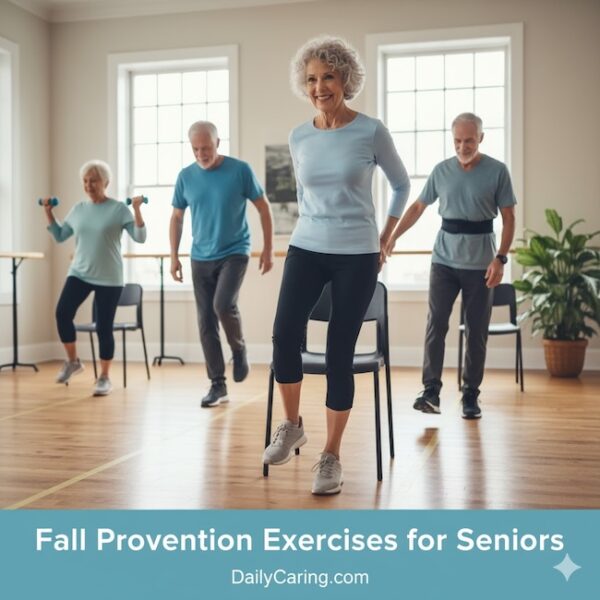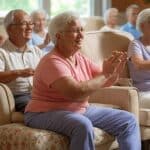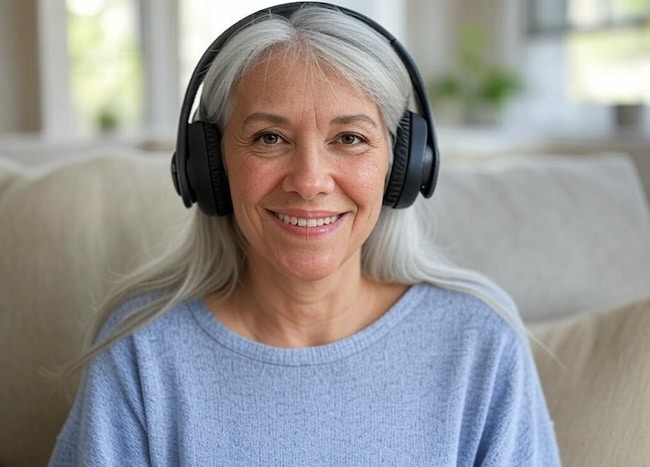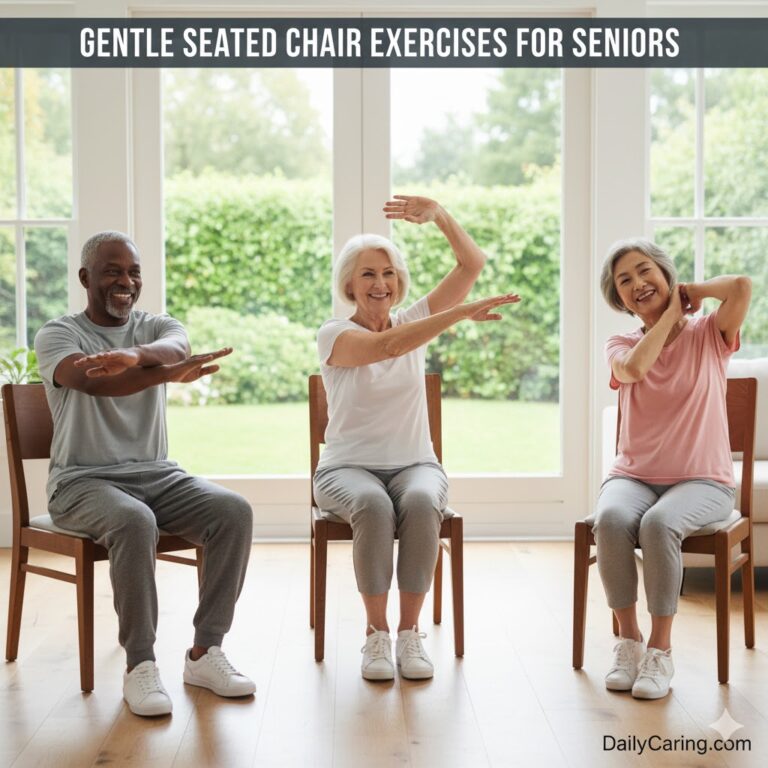Every year, millions of people aged 65+ fall. In fact, 1 out of 4 older people falls each year.
And, if someone falls one time, the chance that they’ll fall again doubles.
Falls can happen at any time. Even simple movements like reaching for an object can trigger a fall.

That’s why balance exercises for seniors to prevent falls are so important. They reduce fall risk by improving balance and strength.
We found a 7-minute video that helps older adults improve balance for everyday movements like reaching.
It explains why reaching can put someone off balance and demonstrates two simple at-home balance exercises – no equipment needed.
1 out of 3 older adults fall each year
Note: The video’s title says it’s for people who have had a stroke, but as discussed in the video, these exercises are perfect for anyone who would benefit from improved balance.
The simple act of reaching for something could cause seniors to fall
Bob and Brad are physical therapists who make easy-to-follow videos showing how to do physical therapy-type exercises at home.
In this video, they explain why the simple act of reaching for something often leads to falls among older adults.
Then, they demonstrate simple exercises that improve balance and coordination while reaching.
This reduces the risk that your older adult will fall while reaching for something.
VIDEO: Decrease Falls After a Stroke with Home Exercise
2 simple home exercises for balance while reaching
An older adult must be safe and balanced while going about their daily activities.
To reduce their risk of falling, Brad demonstrates two exercises to improve balance when reaching for an object.
Exercise 1 (1 min 43 sec in video)
Place a tissue box and a TV remote control on a high table or countertop. Any similarly sized objects will work—either one larger or one smaller.
Your older adult should stand far enough away so that they will have to lean forward and reach to pick up an object.
Ask them to lean forward, pick up the larger object with one arm, and bring it toward them while standing up straight again. Then, lean forward and put the object back onto the counter.
If that’s easy, move up to the smaller object, which will be more difficult.
Exercise 2 (4 min in video)
Have your older adult stand between two countertops or two high tables. Standing where the counter forms an L shape might work or find a stretch of clear countertop to move across.
Put the tissue box and remote control on one side.
Ask your senior to use one arm to pick up the larger object and move it across their body to the other side. Then, please pick it up again and push it back to the starting point.
Brad also shows a few variations for this exercise: how to modify it for an arm weakened by stroke, how to use a cane for extra balance, and how to make it more challenging.
How many repetitions? Which side?
They don’t say how many repetitions to do, so it might be good to start with just a few and see how your older adult responds.
If they’re exhausted, you’ve probably reached their limit and can increase slowly over time.
If they find the exercise very easy, either increase the distance from the countertop, as Brad showed/or increase the number of repetitions.
If your older adult has had a stroke, it might be helpful to focus more on their weaker side.
Prevent falls during exercise
Safety first! The most important thing is that your older adult doesn’t fall or hurt themselves while exercising.
For safety, Bob and Brad recommend using a gait belt and standing next to your older adult while they do these exercises (see 3:05 min in video).
That way, you can provide instant stability in case they get off balance.
Next Steps: See 2 simple at home exercises that reduce the risk of falling while reaching for something (7 min)
Recommended for you:
- 6 Age-Related Changes That Increase Senior Fall Risk
- 3 Easy Balance Exercises Prevent Falls in Seniors
- 10 Medications That Cause Falls in Seniors: Use with Caution
This article contains affiliate links. We never link to products or services for the sole purpose of making a commission. For more information, see How We Make Money.
About the Author

Connie is the founder of DailyCaring.com and was a hands-on caregiver for her grandmother for 20 years. (Grandma made it to 101 years old!) She knows how challenging, overwhelming, and all-consuming caring for an older adult can be. She also understands the importance of support, especially in the form of practical solutions, valuable resources, and self-care tips.













